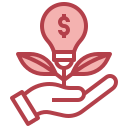This website uses cookies so that we can provide you with the best user experience possible. Cookie information is stored in your browser and performs functions such as recognising you when you return to our website and helping our team to understand which sections of the website you find most interesting and useful.
Eco-Friendly Product Development for New Businesses
Eco-friendly product development is more than a trend—it’s a critical approach for new businesses striving for sustainable growth in a changing world. Incorporating environmental considerations from the outset helps startups differentiate their brands, reduce regulatory risks, appeal to conscious consumers, and contribute positively to the planet. This commitment fosters long-term success by aligning business goals with broader societal and ethical values. In this guide, you’ll discover how new businesses can successfully integrate eco-friendly practices into every stage of product development, from selecting sustainable materials to building a green brand identity. Learn how embracing such innovation not only supports environmental preservation but also drives market relevance and customer loyalty.

